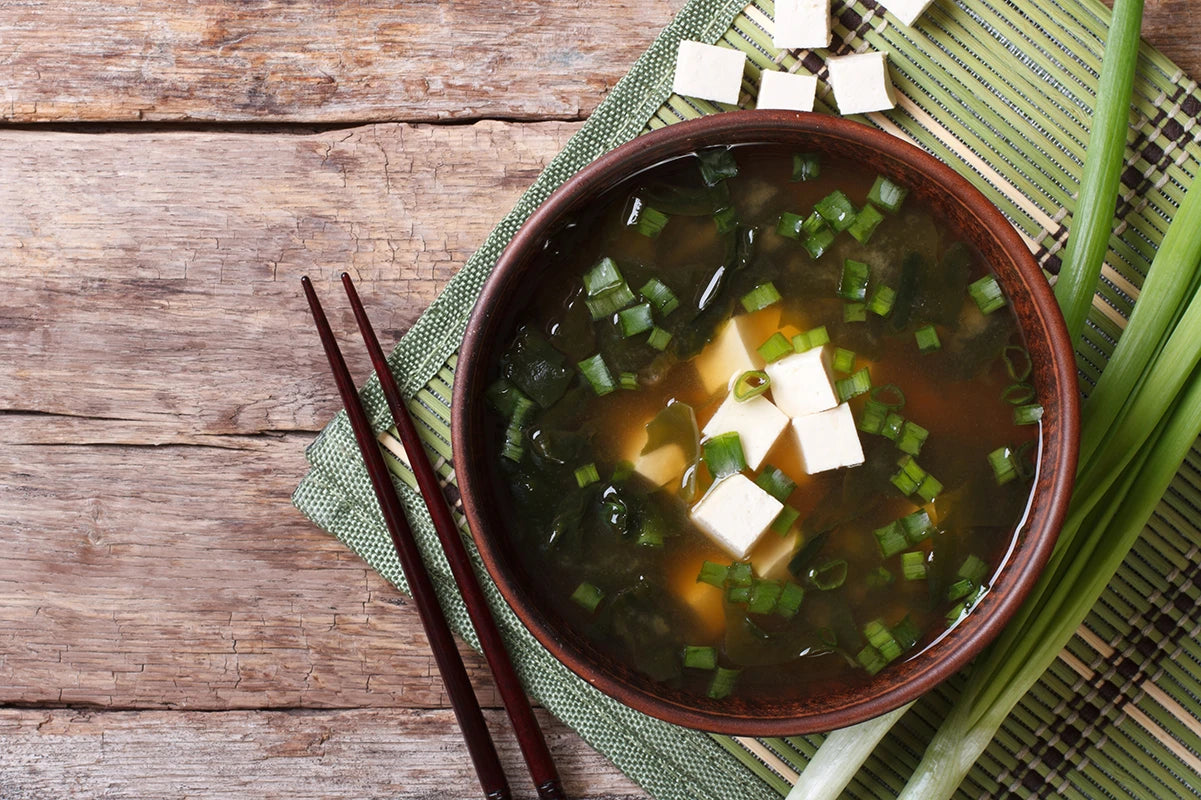
Regarded as having one of the healthiest cuisines in the world - fermented foods have long been an essential part of the daily diet in Japan.
Fermented foods are preserved using an age-old process that not only helps to extend the life of the food and preserve the nutritional value but can give your body a dose of healthy probiotics — live microorganisms that are considered crucial to good digestion.
Fermentation also enhances the umami flavour in foods. Umami is considered the fifth basic taste, characterised by a savoury, rich, and satisfying sensation on the palate.
The fermentation process creates amino acids and peptides that contribute to this umami taste, adding depth and complexity to both ingredients and dishes.

Miso
Miso is a traditional Japanese seasoning, with a rich umami flavour, produced by fermenting soybeans with salt and kōji (the fungus Aspergillus oryzae) and often including other ingredients such as rice, barley and yuzu.
The length of fermentation time can determine the flavour, ranging from sweet and mild to salty and rich.
The list of health benefits of miso is extensive - high in protein, vitamins and minerals, as well as being a rich source of antioxidants.

Soy Sauce
Japanese soy sauce, or shoyu, is a condiment made from fermented soy beans, wheat, salt and water. The traditional production process involves fermenting the ingredients in large barrels for months to create a rich and complex flavour.
Naturally produced, good quality soy sauce is thought to have health benefits for your immune system, blood pressure and gut health.

Sake
Fermentation is an important part of the process when brewing sake; after milling, washing, soaking, and steaming the rice, the fermentation process is started by putting the prepared rice and koji mold together.
Sake may contain a lactic acid bacteria called lactobacillus. Lactobacillus is a probiotic that can help with digestive problems. Sake yeast is also thought to benefits your sleep quality and skin.

Katsuobushi
Katsuobushi is created using a traditional process that has been handed down for over 400 years.
Making katsuobushi involves drying the fish, introducing a beneficial mold that triggers fermentation, and creates a deeper, richer flavour. The process takes many months, and the end result is full of protein with a wonderfully rich flavour.

Umeboshi
These dried and fermented Japanese plums pack a serious punch of flavour. Intensely salty “shiokarai” and satisfyingly sour “shoppai.”
Because they’re fermented, umeboshi are packed with vitamins and nutrients. It is rumored that umeboshi were eaten by samurai before going onto the battlefield to provide them with an energy boost.

